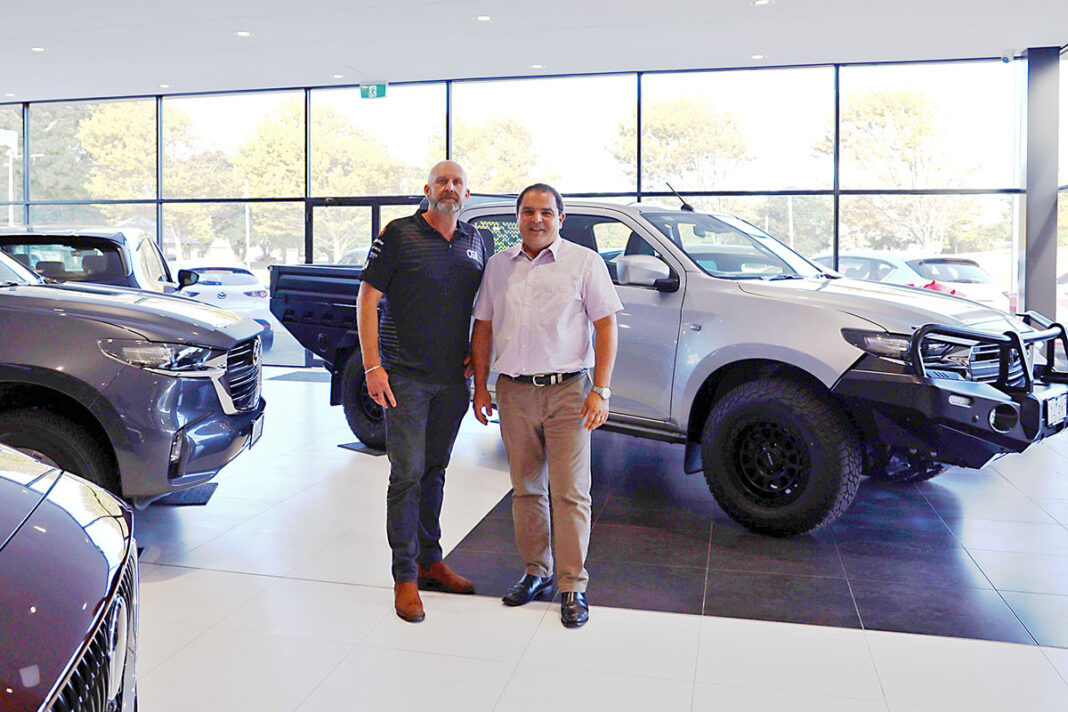Member for Barker Tony Pasin has raised concerned the Federal Government’s preferred new fuel efficiency standards could significantly increase the cost of SUVs, 4WDs and utes by up to $25,000 by 2029.
Shadow Assistant Minister for Infrastructure and Transport Mr Pasin was this week joined by local vehicle industry representatives in Mount Gambier to discuss concerns regarding the government’s vehicle emissions reductions targets as outlined in the recently released National Electric Vehicle Strategy.
Under the proposal, penalties will be imposed on popular petrol, diesel and hybrid models to subsidise the cost of electric vehicles.
Mr Pasin said while everyone wanted to see cleaner, more efficient cars, the government’s proposal was “too far, too fast and would decimate the Australian motor vehicle industry as we know it and reduce consumer choice”.
“Labor’s policy will hit families who rely on SUVs to get their kids to school or sporting carnivals and tradies and farmers who rely on utes to do their job,” Mr Pasin said.
“Labor’s proposed New Vehicle Efficiency Standard is extreme and will add thousands of dollars to the cars that Australians love and need to drive, particularly in the regions. The SUVs, utes and 4WDs that rural and regional Aussies rely on will cost more under Labor.
“These vehicles are also the lifeblood of local car dealerships. Make no mistake, this policy will have severe economic impacts for the entire industry.”
Mr Pasin said Australia’s top three best selling vehicles in 2023 were utes, each facing a carbon tax of $6150 for the Ford Ranger, $2690 for the Toyota Hilux and $2030 for the Isuzu D-Max in 2025.
He said Australia’s top three best selling SUVs faced a carbon tax of $2720 for the Toyota RAV4, $3880 for the MG ZS and $13250 for the Toyota Landcruiser in 2025.
OGR Dealer Principal Bryce Roberts outlined his concerns about what the policy will mean for his customers and his business.
Mr Roberts said he was concerned that Original Equipment Manufacturers (OEMs) will not have the global capacity to meet the demand sought by NVES in a small right hand drive market like Australia.
“The hard truth is that many OEMs may not be able to meet the new NVES and with the vehicles we currently enjoy,” he said.
“For the policy to have its intended impact, cars that meet the policies criteria and that are appealing and affordable to consumers will need to be made available in the Australian market in the timeframe proposed which is a stretch. Furthermore, for the automotive industry to pivot so quickly will put great cost and pressure on upskilling its workforce to service and repair the new technology.
“And, due to production costs and supply shortages, EVs may remain approximately 30% more expensive than internal combustion engines (ICE) vehicles, even with the new ‘carbon tax’ included.
“When the average Australian can no longer drive where he or she wants, when they want, with who they want as we currently do, lifestyles will be impacted greatly.”




